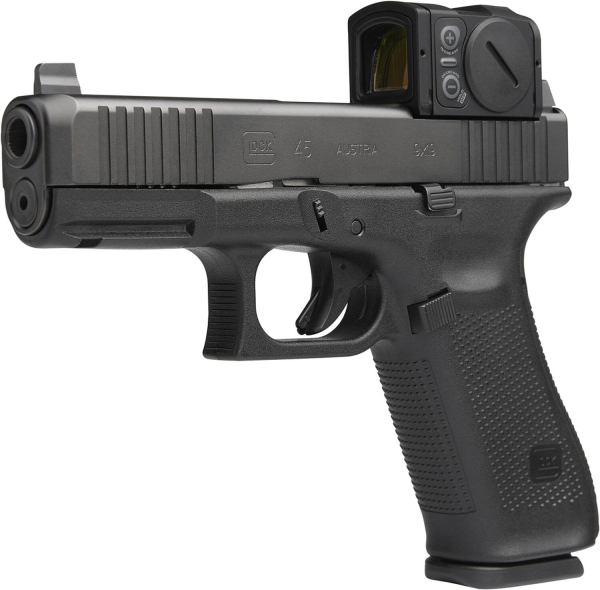
The wave of the pistol-mounted optic is sweeping across the law enforcement landscape nationally. Is it a good idea?
I’m not sure that matters; PMOs are here to stay, regardless of police agency adoption. A question that should be raised is “what’s the smart way to do this?”
As an example, a police trainer gets tasked with determining whether agency issue of pistol-mounted optics is a smart move. An alternative is “approved modification” of agency issued equipment, with the officer buying the optic, mounting and support gear and voluntarily undergoing transition training. Another is “leave well enough alone” and stick with guns as issued.
Complicating this is a program like that from GLOCK: the company will provide some model of their service pistols milled for the agency-specified optic; the outfit has only to get the support gear (e.g., holsters, spares for mounting, batteries, etc.) and training.
It’s not uncommon for agency employees to get a use-study started, with industry support, get part way through the various stages of the study and then get the message to begin the purchase process before the study is completed.
Other, larger agencies have already done studies, they are told. Why reinvent the wheel?
That sounds reasonable. One possible objection is that it could be that the people running the larger department’s study on the agency issue of pistol mounted optics “mailed it in,” or rounded some corners. How is that going to look if your program goes wheels up due to an equipment issue? That becomes a critical problem if someone gets hurt.
You priced the optics. You may have priced some of the incidentals. Did you calculate other potential costs?
Do you have simulations-only guns – with the agency optic on board -- to use in force-on-force training?
Force-on-force is something strongly recommended by optics-specific trainers with experience as being necessary to “fireform” lessons learned on the square range. If you don’t do that, various issues including situational confusion and just plain “missing the dot” seem to arise.
How much does it cost to sort that out? One insider quoted a middle-five-figures dollar amount just to sort part of the total costs out for those “extras.”
The training itself is another expense – and it’s worthwhile. In checking with various sources, marginal qualification shooters vastly increased scores – not surprising with “new toys” – but also showed improvement in gun handling skills.
That alone could be worth the expense of going to PMOs. But you need to be concerned with other issues, individual shooter issues.
As an example, one issue for some shooters is a visual convergence problem. Knowing how to deal with these various issues makes it critical you send your firearms instructors to instructor schools geared to PMO use and issue.
Just like with officer survival, tactical operations – and calculating the annual budget – considerable study, planning and preparation pay dividends. It minimizes the chance of marginal performance, injury to officers, suspects and bystanders, and – if you’re smart – can save the taxpayers money while increasing the competence of the troops.
— Rich Grassi